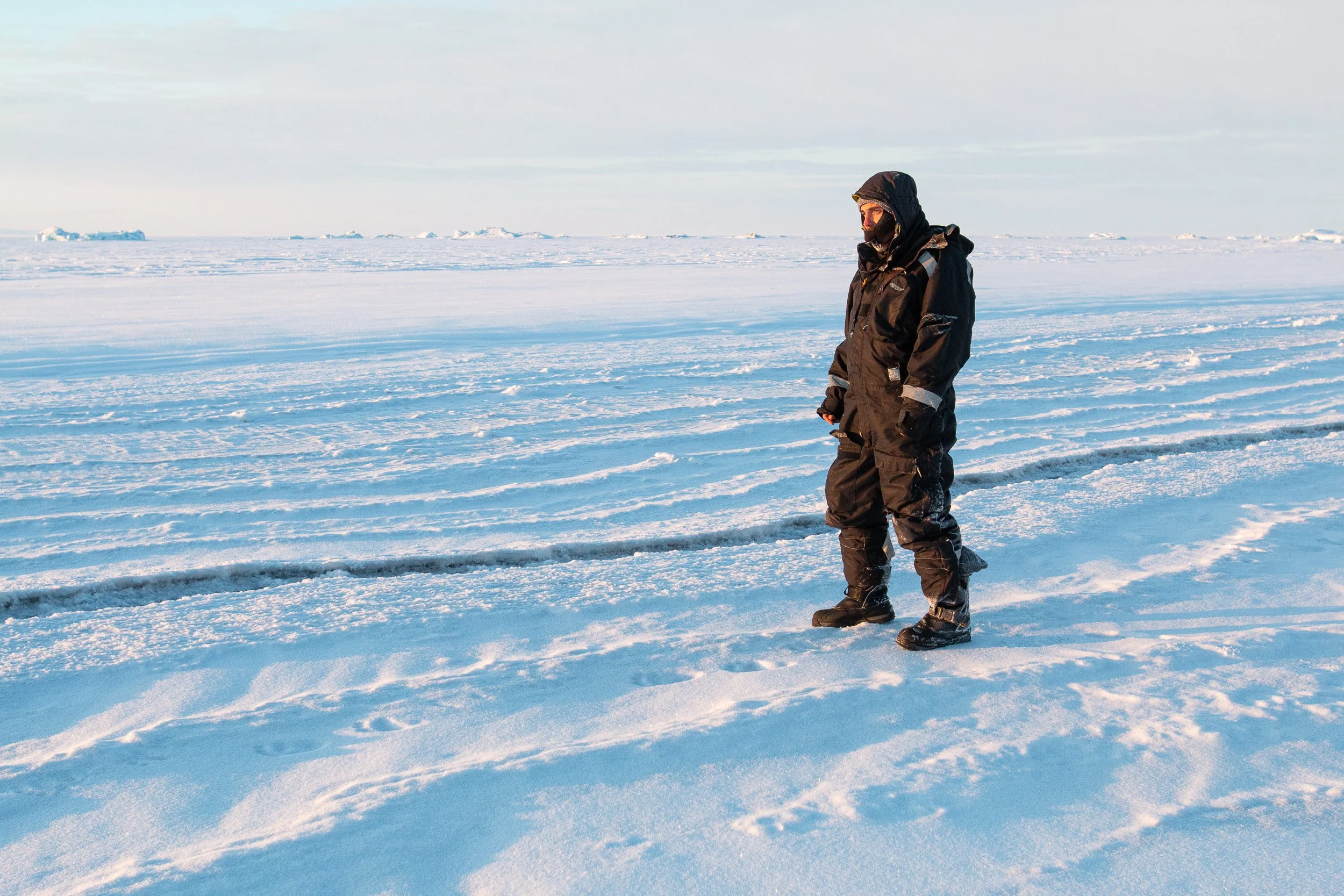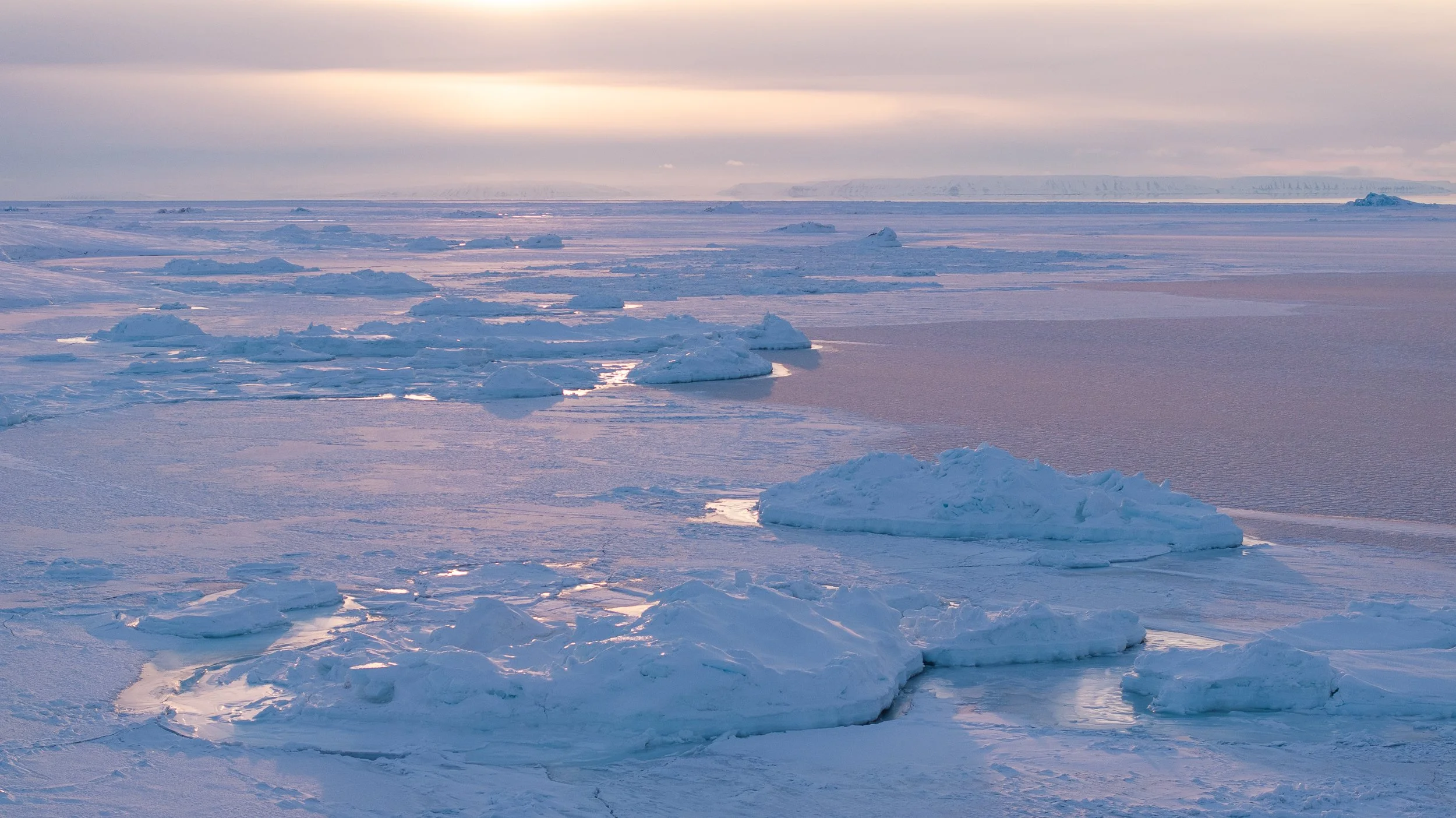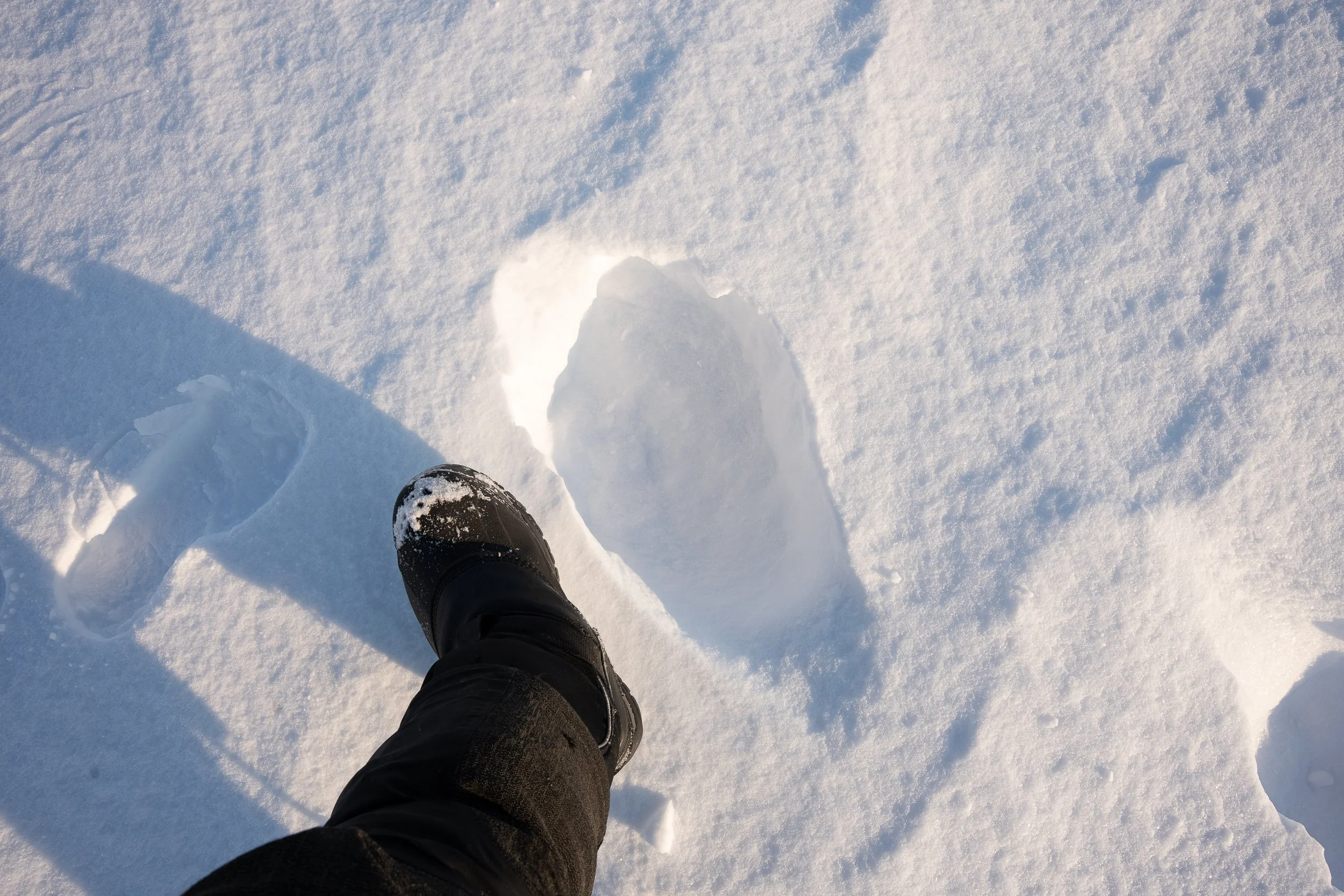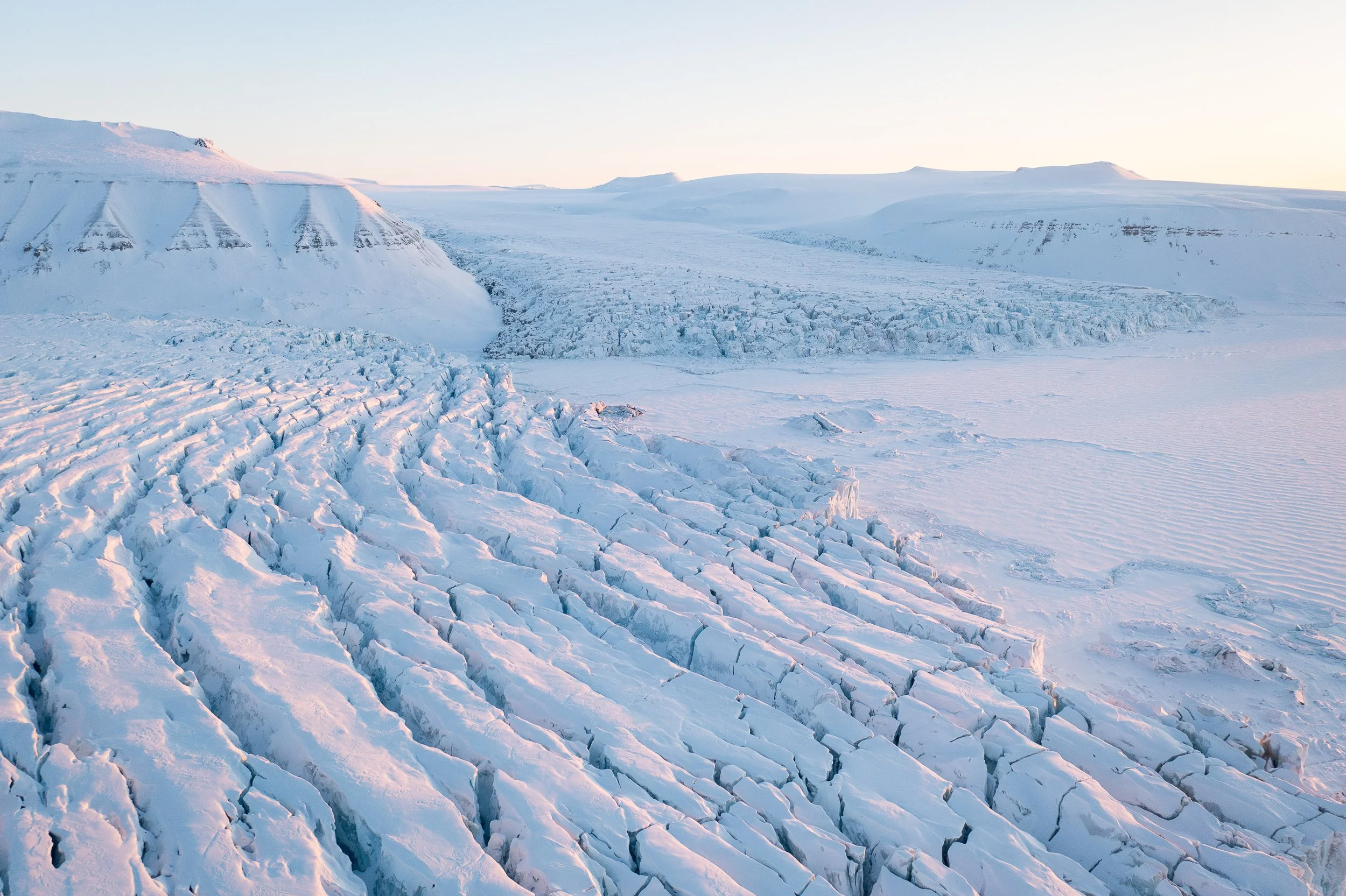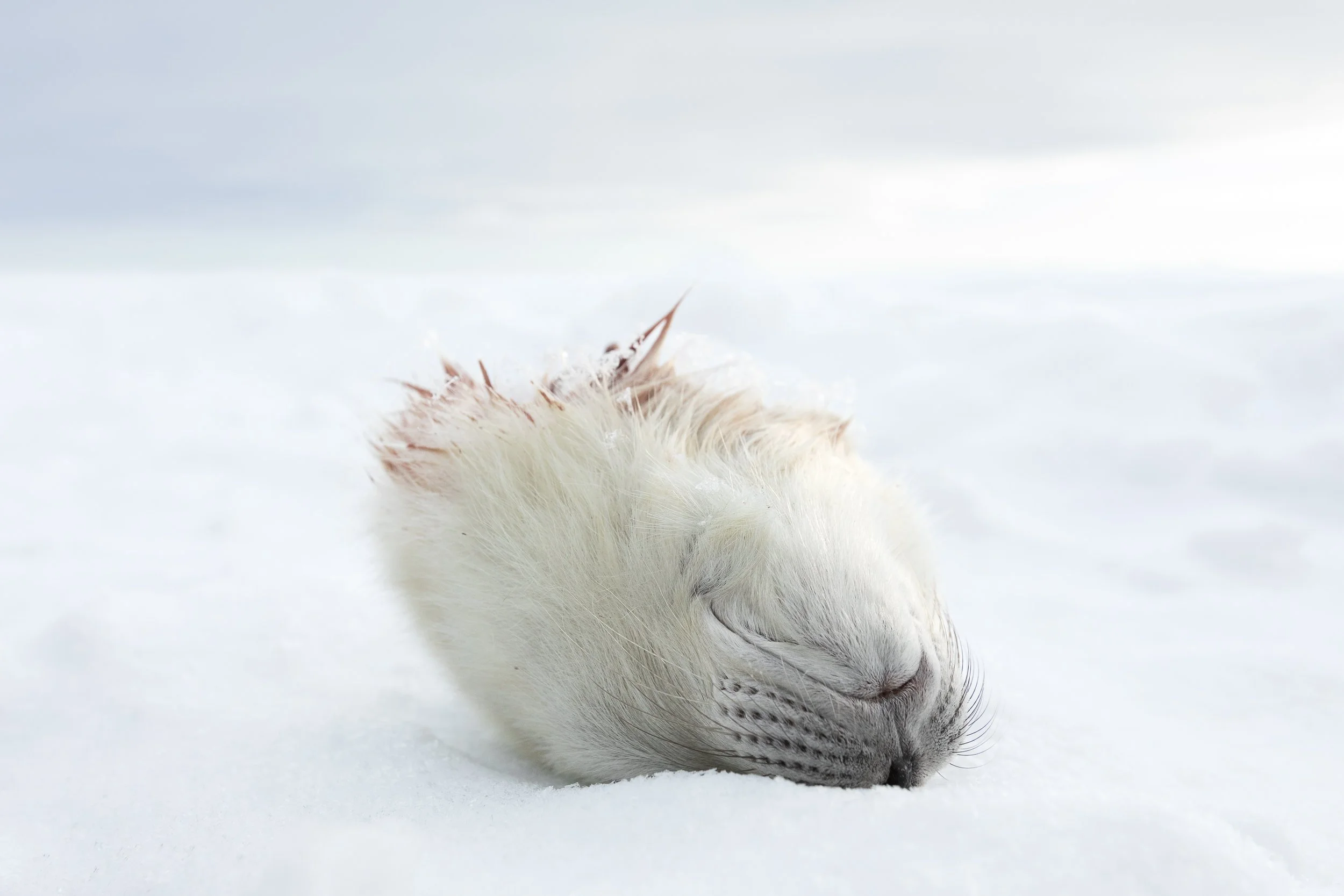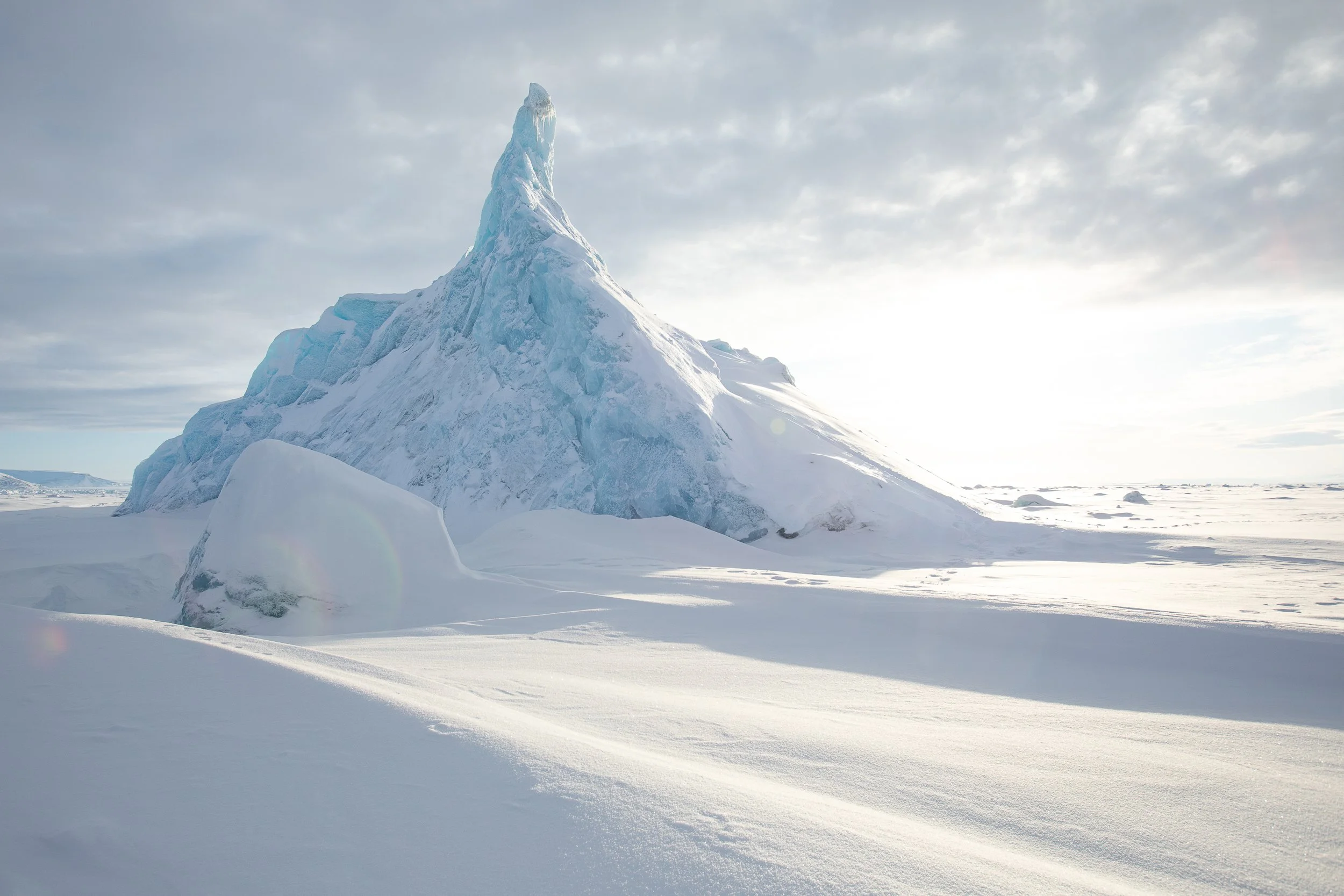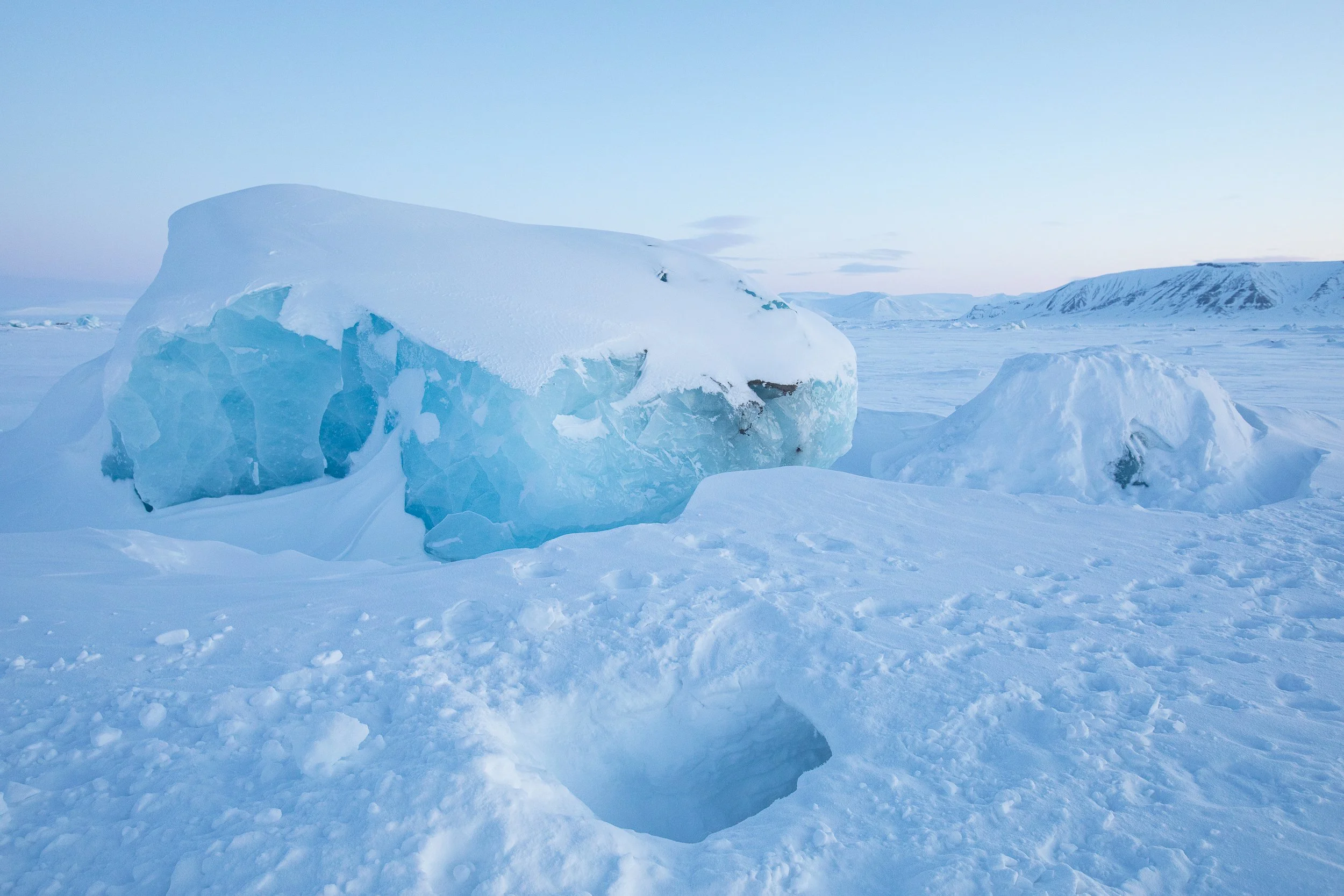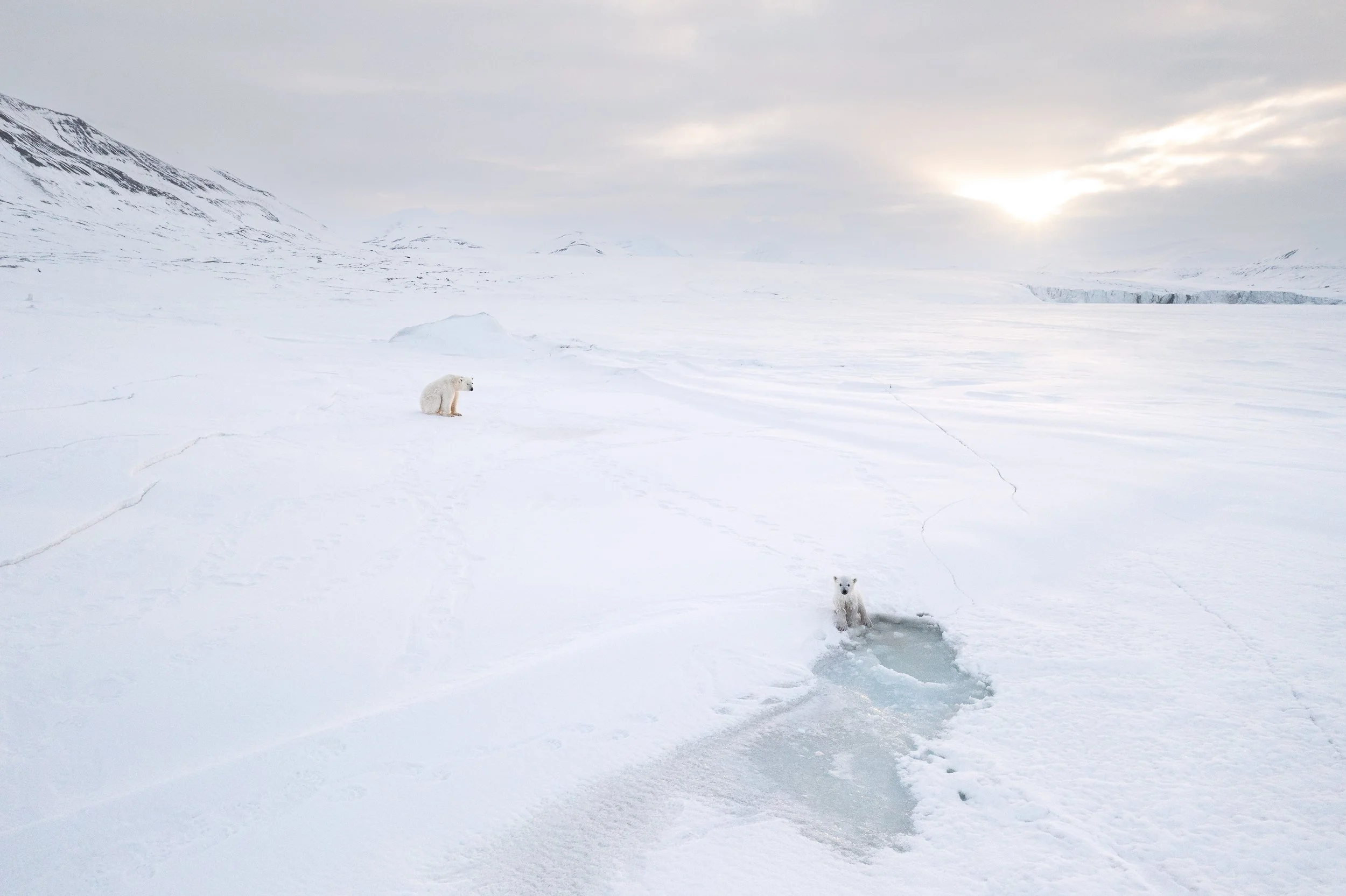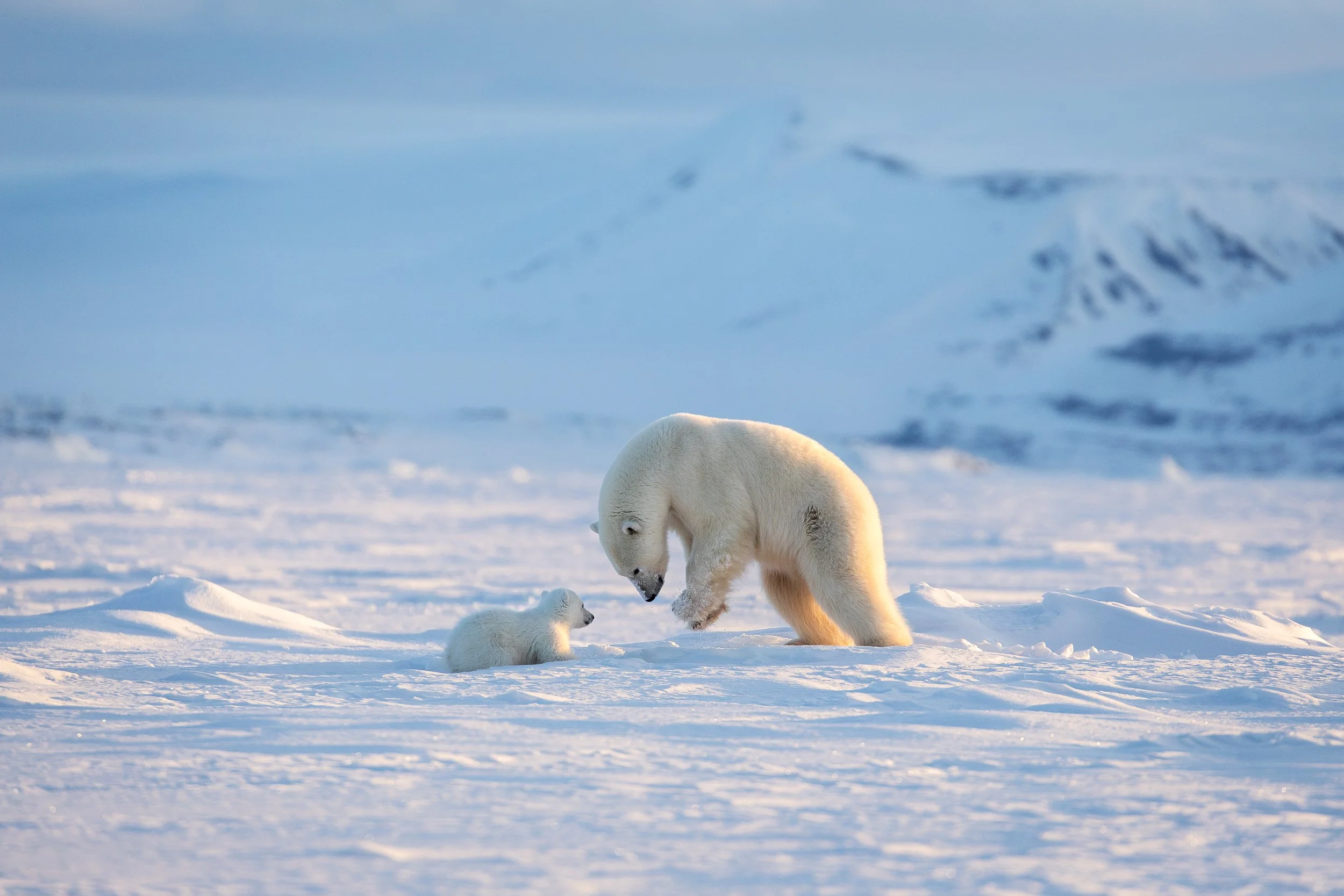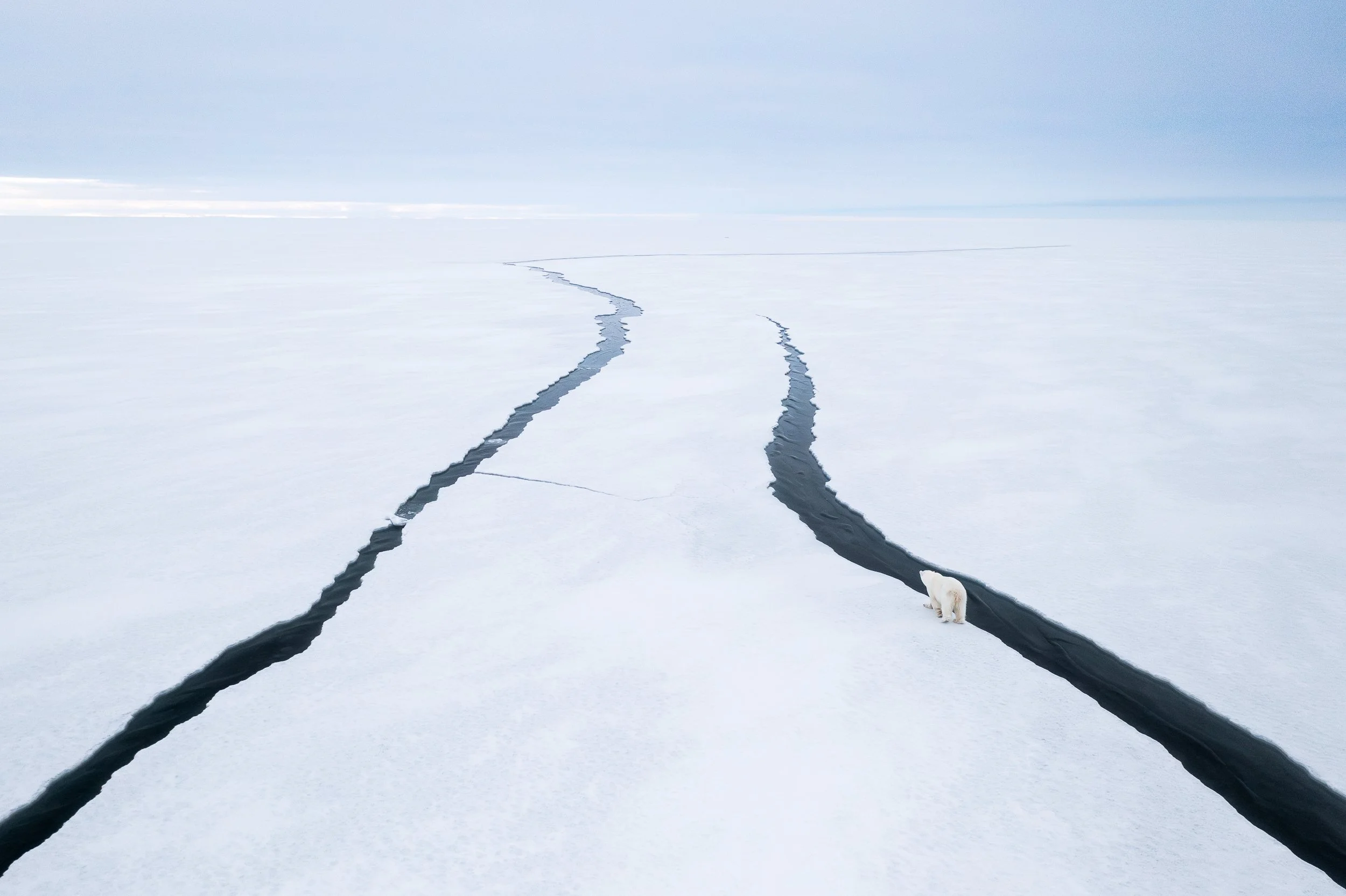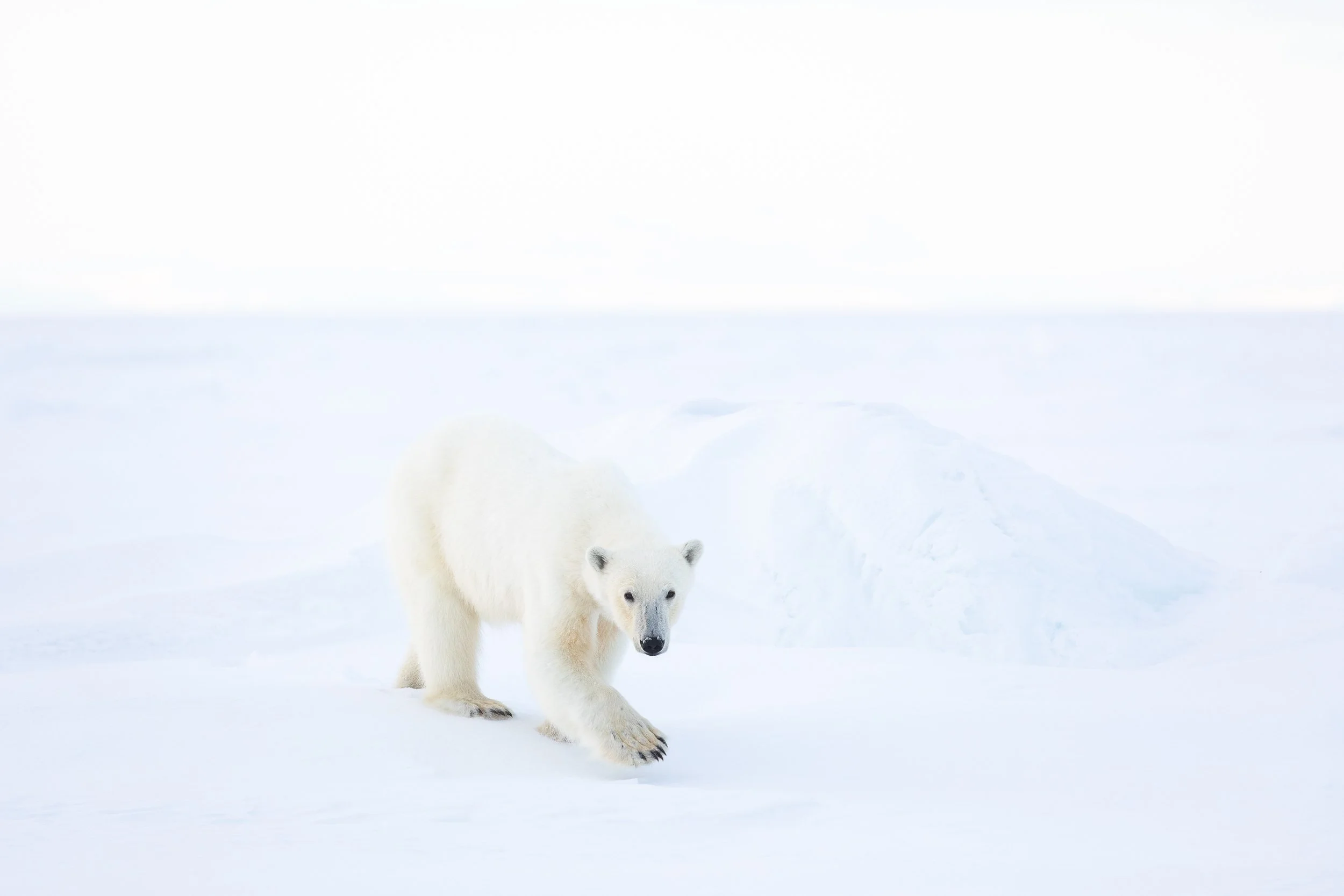The Svalbard Ice Bear
We have told the story of climate change, in part, through pictures of polar bears. This iconic species acts as an umbrella of attention for the environment they live in, the Arctic, which has lost nearly half of the summer sea ice extension since the 1980’s affecting the life of its iconic species.
Not surprisingly, we often perceive this animal with a sense of compassion: its home disappears. The figure of the polar bear often carries a veil of nostalgia, linked to the vanishing sea ice, casting a shadow on their existence and spurring a connection through pity, for some people, the only one they have experienced. But this set of feelings alone has some limitations and can eventually lead to emotional fatigue or condescension, spoiling the opportunity for a deeper connection and understanding of the polar bear and its environment. After all, it wasn’t compassion that sparked the curiosity of many of us for these remote latitudes and their inhabitants. It was pure inspiration and curiosity about their life mysteries, diverse shapes and adaptations.
Twenty years after I started daydreaming, I write these lines from Svalbard, cradle of the European Arctic dreams and my very own. After several years of research on the ecology of Arctic marine mammals, I decided to move to Svalbard. I wanted to feed my theoretical knowledge with in situ experiences and observations.
In Longyearbyen, one can find polar bears everywhere: shopping bags, corny ornaments, car stickers, company brands, beer pints, vintage postcards, traffic signs and even the hospital logo. Yet you can’t find them virtually anywhere. “They are a religion”, I think, 7 months after having moved here. But 2024 brings remarkable sea ice conditions, and I am on the quest for my truth. I know there is so much to learn from the Arctic outdoors.
With me is my friend and companion of many Arctic adventures, Ismaele Tortella. Together we’ve crouched in the snow among flocks of rock ptarmigans, stalked otters from the fjord's icy shores or plunged into the cold waters to witness the whales’ winter feast. We are not new to challenging winter conditions and risk, but we sense this adventure will be different. Once you hit off in the high Arctic you have to count on yourself.
Traveling in the Arctic sea ice in search of polar bears can be an epic task. Polar bears roam vast territories difficult to access, with plenty of hides for such an elusive creature, for the ice is not all flat and smooth. It is April, and the fast-ice (stable, attached to land) forms a solid platform connecting the eastern bays of Spitsbergen with the adjacent islands of Barentsøya and Edgeøya. Beyond, the drifting sea ice connects with the Russian archipelagos of the Arctic. The fata morgana threatens the traveler with an open water illusion on the horizon, but this won’t be true until later in May. The sea ice cover is among the greatest in the last 20 years here.
After a day of traveling, we reach our basecamp for the next days: a small cabin around 1.80 m height and 7 m2 half buried in the snow. Sitting by the frozen shores on polar bear territory, both the door and window are propped up, as them breaking in cabins is not odd. We dig the cabin out and settle in. Dinner is not thrilling, but the list of snacks prepared by our friends on purpose for our “expedition” makes us smile. The sun has shone through the night and the light starts hardening by 7 am. It is time for us to go to bed, as we’ll live in a different time schedule from now on. I go out to take a pee, facing the endless Barents Sea. After many years studying this archipelago, a powerful feeling floods me. We go to bed. For the first time in a while, I dream of what I see.
Next morning (evening) we prepare for a whole day out to start discovering the environment. The first relationship that one establishes with a bear is not direct, but through landscape features. A big-foot track triggers a shudder, followed by immediate foot-to-paw comparison, a witness of our plantigrade condition.
Track after track, patterns start to emerge. Some wander offshore and pick up on important sea ice features like ridging of plates where snow accumulates around hummocks or where open leads may form. Others seem to stay more coastal, traveling along the shore and visiting different inlets.
Approaching the bays where glaciers flow into the sea, the dance of tracks trails the terrain to the point one thinks these creatures are ghosts. The glacier fronts break off here during summer, creating a flow of icebergs adrift on the sea. During winter, the sea freezes up, incorporating them into a frozen matrix of boulders, forming a real labyrinth at times. The bear tracks come around the iceberg contours alone, together in different sizes, or followed carefully by those of other kinds, like arctic foxes. From boulder to boulder, they climb onto their blue and white slopes to rest, or they disappear in adjacent holes. What is so important for the ice bear?
Answering my question, the severed head of a ringed seal pup no older than a week rests around an iceberg. It pulls my reel. Icebergs act as a connecting portal between the underwater, still immersed in the darkness, and the surface where the sun does not set anymore. They also act as a retaining wall for wind drifted snow. This is an important feature for breeding ringed seals in a region where precipitation is scarce and comparable to a desert. Ringed seals need a stable ice platform, where they maintain open breathing holes, with enough snow to dig lairs to hide and nurse their pups during the ~40 days of lactation before they separate.
Marine terminating glacier fronts are prime breeding areas for ringed seals and foraging hotspots for a variety of sea birds and marine mammals. Through the input of freshwater and suspended sediments, glaciers activate recirculation of water masses that increase the availability of nutrients and zooplankton, impacting higher trophic levels in the food web. The calving of ice has made glacier fronts an important hotspot for Arctic endemic fauna in the Barents region, where an increase in the air temperature of 2.7ºC per decade since the 1980’s has led to dramatic sea ice loss. In Svalbard, many have retracted to land in recent years, shutting down the rich network of ecological interactions they generated.
It is in one of these bays that we spotted polar bear for the first time. A yellow ball and its satellite rolling over the edge of an iceberg in the middle of the bay. A female and a cub of the year. Around late March, they emerged from the winter den up in the mountains, where the female dug herself late in the previous year to rest and give birth to the cub, a process that lasts around 5 months. They’ve now descended to the sea ice. The mum is on its leanest and needs seals to double her fat reserve through the summer and keep suckling the cub. Using our binoculars, we observe every movement. While we hold ourselves in silence, we are bursting in fireworks inside. It does not take long for us to realize that what we are witnessing is not just polar bears, but a mum and her cub. Every gesture seems to belong to them.
Mum travels from iceberg to iceberg, muzzle nodding on olfactory cues, while the cub follows her on an erratic track of play that may lead him to discover his Arctic adaptations. Ice climbing, melting pond swimming, powder rolling, mum biting… that was too much. She is hunting, and this requires an attitude, long waiting with sharp focus on smell, sound and touch that will allow her to pounce through at the right time and spot over the snow lair of a seal. After many attempts and treading softly, she gets a ringed seal pup. She seems more relaxed after the meal and gives herself into joy, playing hide and seek through a translucent fracture of ice that has refrozen. They will need many hunts like this during the following weeks. In the next days, we’ll find mum and cub in the same spot. The glacier bay is a safe place and good ground for hunting.
In late April, out in the frozen sea, open leads start to form, attracting other species like bearded seals, which do not maintain breathing holes on fast-ice. These are a more difficult catch compared to ringed seal pups, but a single hunt provides plenty of fat, and bigger adult and young bears follow these features in search of prey. This is not an easy place for a mum and a cub, which will stay more coastal, benefiting from a later break-up of the sea ice in the bays. Wandering in the drifting ice north of Svalbard is not ideal for cubs, which are at risk of hypothermia if they must swim in cold waters during their early life.
But climate warming is cropping the time with suitable sea ice around the archipelago. An earlier break-up of the stable fast-ice in spring occurs now in Svalbard, where the area with this kind of ice has halved in the last 40 years. Even if glacier fronts may provide food and glacier ice for seals to rest, they won’t be as good hunting grounds if the sea ice is missing. Polar bears need to perform an aquatic approach on broken glacier ice, a tactic that only few bears seem to be following according to recent research. These bears spend now more time stranded on land. In fact, the lack of ice is considered one of the possible causes that has led the polar bear to hunt reindeer more frequently, a behavior that is generating a lot of interest among researchers in recent years. On the other hand, pregnant females that spend the summer offshore on the pack-ice hunting seals may not return on time to breed on the winter dens on land if the formation of sea ice is delayed during the autumn. This has already led to a shift of denning territory from preferred sites in eastern Svalbard. Time is of the essence for all ice-dependent forms of life.
But climate warming is cropping the time with suitable sea ice around the archipelago. An earlier break-up of the stable fast-ice in spring occurs now in Svalbard, where the area with this kind of ice has halved in the last 40 years. Even if glacier fronts may provide food and glacier ice for seals to rest, they won’t be as good hunting grounds if the sea ice is missing. Polar bears need to perform an aquatic approach on broken glacier ice, a tactic that only few bears seem to be following according to recent research. These bears spend now more time stranded on land. In fact, the lack of ice is considered one of the possible causes that has led the polar bear to hunt reindeer more frequently, a behavior that is generating a lot of interest among researchers in recent years. On the other hand, pregnant females that spend the summer offshore on the pack-ice hunting seals may not return on time to breed on the winter dens on land if the formation of sea ice is delayed during the autumn. This has already led to a shift of denning territory from preferred sites in eastern Svalbard. Time is of the essence for all ice-dependent forms of life.
Ismaele and me reflect about the fragility of the environment we have been exploring. The east coast of Svalbard really is an Arctic haven, where the conditions necessary for establishing such a unique network of interactions exist in plenty. Cold, sea ice, glaciers, fat rich Arctic animals, polar bears. But, for how long? We return to Longyearbyen against the clock during the first days of May. The peaceful and serene extension of sea ice was starting to show signs of danger. Some cracks on the ice had expanded into authentic highways of open water. The snow melted in the surface creating an overwatering slush were one can get easily stuck. It was not a safe place to be. Back in the safety of the town the thaw speeds up washing off the snow of the slopes, together with so many of my unresolved emotions. It is time for me to reflect.
Observing polar bears in nature is truly touching. Unfolding their connection with other parts of the ecosystem, never was ecology so clear in front of our eyes. That is the greatness of the Arctic. Polar bears are not only good emissaries of this environment, but a powerful example of the life network. I believe it is through a deep understanding of their connection with the environment that we grasp the significance of their existence. A powerful, resilient existence that lingers on a vulnerable, quickly changing Arctic, while echoing the voices of many other forms of life. Voices that ever existed with the only and purest purpose of life itself. My voyage has been worth it, and I hope to shine a light on the still existing nature of the ice bear.
Samuel Llobet


